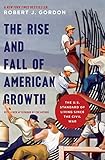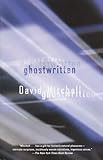It wasn’t planned, but 2017 turned out to be a year when my reading hopscotched happily between genres, styles, and voices. Here are half a dozen highlights, arranged by where you might find them shelved in your favorite bookshop.
Memoir
Joan Didion’s South and West is a string of stray thoughts and notebook jottings that reminded me why I find her such a mesmerizing and maddening writer. These 126 pages were compiled in the 1970s, when Didion was trying to conjure magazine articles about the deep South and the Patty Hearst murder trial. The articles never materialized, but this book reaffirms Didion’s mesmerizing prescience as a reporter, as well as her maddening tendency toward preciousness. The prescience comes from Didion’s observation that by 1970 the deep South had become everything California was not: “the future, the secret source of malevolent and benevolent energy, the psychic center.” The remark now reads like a prophecy in a country that has elected Donald Trump president and has allowed itself to be reduced to a big fat gooey red center sandwiched between two wafer-thin blue coasts. The preciousness comes from Didion’s familiar, brittle persona, which makes it nearly impossible for her to get out of her rental car and pump gas on a “nightmare” stretch of Louisiana back road. The book’s most valid insight might be this: “In the South they are convinced that they have bloodied their place with history. In the West we do not believe anything we do can bloody the land, or change it, or touch it.” Maybe the very best thing about this uneven book is that its section on the West morphed into one of Didion’s finest meditations on her native California, the 2003 memoir Where I Was From.
Fiction
 Nominated for the National Book Award, Carol Zoref’s powerful first novel, Barren Island, tells the story of immigrant children who grew up on the titular island, a remote industrial hell in New York City’s Jamaica Bay, where the city’s garbage and its dead animals were sent from the mid-19th to the mid-20th century. Since I have been gathering string for more than a dozen years in the hope of writing my own novel set amid the horrors of Barren Island, the news that another writer got there first filled me with minglings of disappointment and dread. But Zoref’s book turned out to be both very fine and very different from the book I’ve been dreaming. Reading Barren Island reminded me that no writer owns a subject, and that no two writers could possibly write about a given subject in the same way. By the time I reached the final page, my dread had turned to relief, then resolve. There’s nothing stopping me from writing a book that now has a pedigreed predecessor, even if my book is still little more than a dream, a pile of notes, a central character, and a working title: The Angel of Barren Island. Thank you, Carol Zoref.
Nominated for the National Book Award, Carol Zoref’s powerful first novel, Barren Island, tells the story of immigrant children who grew up on the titular island, a remote industrial hell in New York City’s Jamaica Bay, where the city’s garbage and its dead animals were sent from the mid-19th to the mid-20th century. Since I have been gathering string for more than a dozen years in the hope of writing my own novel set amid the horrors of Barren Island, the news that another writer got there first filled me with minglings of disappointment and dread. But Zoref’s book turned out to be both very fine and very different from the book I’ve been dreaming. Reading Barren Island reminded me that no writer owns a subject, and that no two writers could possibly write about a given subject in the same way. By the time I reached the final page, my dread had turned to relief, then resolve. There’s nothing stopping me from writing a book that now has a pedigreed predecessor, even if my book is still little more than a dream, a pile of notes, a central character, and a working title: The Angel of Barren Island. Thank you, Carol Zoref.
History
 Deanne Stillman has spent the past three decades building an impressive body of work about the depredations visited on the land, the animals, and the people of the American West in the name of “progress.” She came out this year with a delightful hybrid, a sort of double-biography and cultural history called Blood Brothers: The Story of the Strange Friendship Between Sitting Bull and Buffalo Bill. When the great Lakota warrior Sitting Bull returned from exile in Canada and briefly joined Buffalo Bill’s Wild West show, the promotional posters trumpeted the unlikely alliance of two men who were “Foes in ’76, Friends in ’85.” They were not merely friends, in Stillman’s telling, but “a powerhouse of mythology.” Drawing on the vast literature about the two men and her own prodigious research, Stillman has delivered a book that cements her reputation as one of the most astute and passionate chroniclers of that vast, blood-soaked canvas known as the American West.
Deanne Stillman has spent the past three decades building an impressive body of work about the depredations visited on the land, the animals, and the people of the American West in the name of “progress.” She came out this year with a delightful hybrid, a sort of double-biography and cultural history called Blood Brothers: The Story of the Strange Friendship Between Sitting Bull and Buffalo Bill. When the great Lakota warrior Sitting Bull returned from exile in Canada and briefly joined Buffalo Bill’s Wild West show, the promotional posters trumpeted the unlikely alliance of two men who were “Foes in ’76, Friends in ’85.” They were not merely friends, in Stillman’s telling, but “a powerhouse of mythology.” Drawing on the vast literature about the two men and her own prodigious research, Stillman has delivered a book that cements her reputation as one of the most astute and passionate chroniclers of that vast, blood-soaked canvas known as the American West.
Macroeconomics
 It’s not every day that you crack open a deeply researched, thickly annotated, 762-page work of macroeconomics and discover you’re in the grip of a page-turner. But that’s what happened as I breezed through Robert J. Gordon’s magisterial The Rise and Fall of American Growth: The U.S. Standard of Living Since the Civil War. The book makes a compelling case that the years from roughly the end of the Civil War to 1970 were a time of profound change in Americans’ day-to-day lives that’s unmatched in human history. Moreover, the great inventions that propelled those changes were one-offs, which means the “special century,” as Gordon calls it, will never be repeated. This book, like Barren Island, struck a personal nerve with me: my paternal grandfather lived from 1863 to 1955, roughly the span covered by Gordon, and I had spent years trying to imagine what it was like to be born to a slave-owner during the Civil War and to die at the frosty peak of the Cold War. Thanks to Gordon, I now know enough to begin to imagine.
It’s not every day that you crack open a deeply researched, thickly annotated, 762-page work of macroeconomics and discover you’re in the grip of a page-turner. But that’s what happened as I breezed through Robert J. Gordon’s magisterial The Rise and Fall of American Growth: The U.S. Standard of Living Since the Civil War. The book makes a compelling case that the years from roughly the end of the Civil War to 1970 were a time of profound change in Americans’ day-to-day lives that’s unmatched in human history. Moreover, the great inventions that propelled those changes were one-offs, which means the “special century,” as Gordon calls it, will never be repeated. This book, like Barren Island, struck a personal nerve with me: my paternal grandfather lived from 1863 to 1955, roughly the span covered by Gordon, and I had spent years trying to imagine what it was like to be born to a slave-owner during the Civil War and to die at the frosty peak of the Cold War. Thanks to Gordon, I now know enough to begin to imagine.
Crime
 The Hard Case Crime series continues to surprise and delight. This year it introduced me to Max Allan Collins, a prolific crime writer who has just added the novel Quarry’s Climax to his long-running series about the professional assassin Jack Quarry, who gets the party started with this ice-breaker: “I’d been doing murder for hire for five years now—well, seven and change, if you include the two tours of Vietnam.” Quarry’s new mission has him headed to Memphis, where he’s been hired to kill the guy who’s been hired to kill Max Climer, a lovable Larry Flynt clone who runs a strip club, publishes a skin mag called Climax, and is launching a lucrative X-rated video line. Collins is a polished writer who keeps the story moving as the bodies pile up and the double-crosses go triple and quadruple. What a glorious moral cesspool!—where the cleanest guy in town is the one who gets paid to kill people, and always earns his paycheck.
The Hard Case Crime series continues to surprise and delight. This year it introduced me to Max Allan Collins, a prolific crime writer who has just added the novel Quarry’s Climax to his long-running series about the professional assassin Jack Quarry, who gets the party started with this ice-breaker: “I’d been doing murder for hire for five years now—well, seven and change, if you include the two tours of Vietnam.” Quarry’s new mission has him headed to Memphis, where he’s been hired to kill the guy who’s been hired to kill Max Climer, a lovable Larry Flynt clone who runs a strip club, publishes a skin mag called Climax, and is launching a lucrative X-rated video line. Collins is a polished writer who keeps the story moving as the bodies pile up and the double-crosses go triple and quadruple. What a glorious moral cesspool!—where the cleanest guy in town is the one who gets paid to kill people, and always earns his paycheck.
Budding Genius?
 As the year ends, I’m hip-deep in a belated first foray into the work of the decorated David Mitchell: his debut novel, 1999’s Ghostwritten, published when he was 31. So far the novel has transported me to Okinawa, Tokyo, and Hong Kong, with Mongolia, Petersburg, London, and other destinations up ahead. The writing is bracing, bewildering, and it makes me hungry to know where it will take me next and what kind of books come after it. To find out, I intend to spend the coming year reading all of Mitchell’s fiction in chronological order, something I’ve done with only one other writer, the prolific British fantasist China Miéville. If that immersion is any measure, 2018 is going to be another rich year in reading.
As the year ends, I’m hip-deep in a belated first foray into the work of the decorated David Mitchell: his debut novel, 1999’s Ghostwritten, published when he was 31. So far the novel has transported me to Okinawa, Tokyo, and Hong Kong, with Mongolia, Petersburg, London, and other destinations up ahead. The writing is bracing, bewildering, and it makes me hungry to know where it will take me next and what kind of books come after it. To find out, I intend to spend the coming year reading all of Mitchell’s fiction in chronological order, something I’ve done with only one other writer, the prolific British fantasist China Miéville. If that immersion is any measure, 2018 is going to be another rich year in reading.
More from A Year in Reading 2017
Don’t miss: A Year in Reading 2016, 2015, 2014, 2013, 2012, 2011, 2010, 2009, 2008, 2007, 2006, 2005










